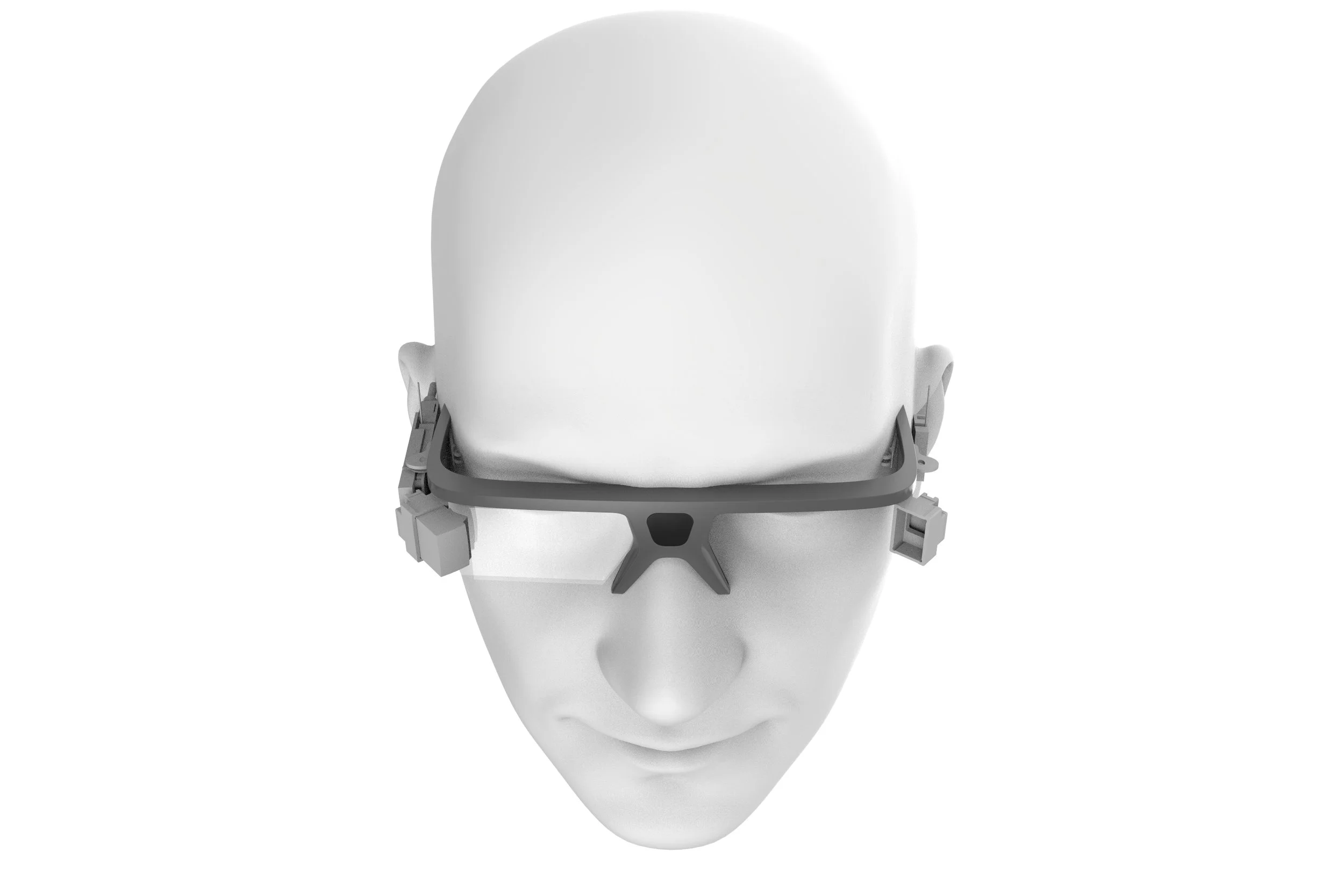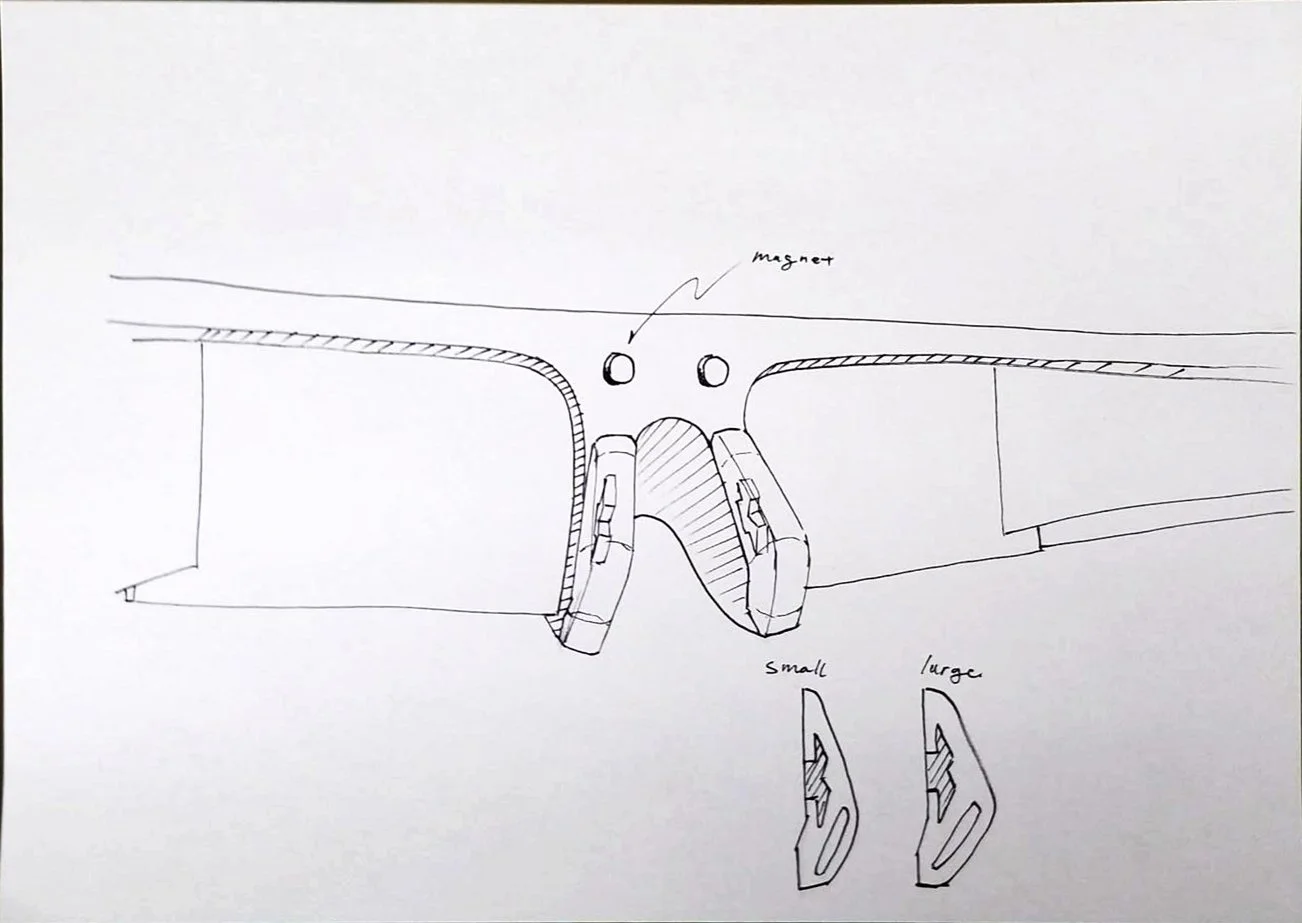LEION
May 2018 - Dec 2020
Leion are augmented reality glasses designed for both consumers and enterprise users. The device is used as a head-up display for presenting visualized IoT data, 3D virtual contents, or to simulate a big screen for gaming. Leion differentiates itself from other smart glasses by its design philosophy. The minimalist design not only explains the advance artificial intelligence, but also both sticked out prisms and complex electronics are covered very elegant surfaces. Enhanced with bright OLED display and high quality optics, the product expose only transparent waveguide display in the front.
Contributions
Product define, industrial design, system architecture and software design, project management
Design&Developing Tools
Rihnoceros, CATIA, Sketch, Figma, Adobe Photoshop, Xmind
A rocky start
In 2017, after years of accumulation and market research, we believed that a more immersive binocular AR experience could help us further expand into the enterprise market. However, our over-reliance on traditional digital product design and manufacturing experience led to a bumpy start for LEION. LEION's first prototype, codenamed R10, was bulky and offered a limited field of view.
When we compared R10 with other AR glasses of the same period, it not only failed to showcase the advantages of its thin, high-transparency waveguide module but also appeared ordinary in terms of appearance. As a result, we decided to scrap the previous draft and start a new design.
While we managed to shrink the hardware stack in later versions of LEION, R10's hardware stack was not excessively large to begin with. However, to achieve the sleek, curved design that encased the protruding light engine, we had to introduce substantial internal cavities, which ultimately led to a larger device.
Another major issue stemmed from our continued reliance on traditional digital product design and development thinking. Out of concern that the product might be damaged, we added a full metal frame and a thick ABS shell to protect the waveguide module for R10. Subsequently, worried that users would have difficulty seeing the screen outdoors, we added a default dimming lens attachment. However, when we revisited the user and market research results, we realized that these two features would not significantly impact users' purchasing decisions.
Redefine LEION
The initial goal of designing and developing LEION was to provide enterprise users with a lightweight, easy-to-use AR glasses with 3DoF spatial interaction capabilities. At the same time, we aimed to break free from the constraints of traditional product forms with an innovative design. We firmly believed that if a product could not truly integrate into users' work environments, then any additional drop protection or optimizations for specific use cases would be meaningless. Therefore, at the very beginning of the final LEION project, we decided that the product's form factor should maximize the advantages of the waveguide module's high transmittance and thinness, while abandoning excessive drop protection and line designs that created large cavities. The goal was to achieve the smallest possible size.
We soon settled on a design strategy: we would begin by defining the product's core aesthetic with the top bar, and then apply this design language consistently to the side panels.
Unlike traditional glasses and AR glasses using diffractive waveguide modules, the light engine of array waveguide modules causes the sides of the frame to protrude forward. Traditional eyewear design languages are not suitable for this product. After extensive research, we decided to adopt a "cut" design language, visually separating the two side panels from the main frame. Combined with the more forward-placed outer panel, LEION creates a sense of expanded vision.
Detailing
Toward the end of the project, we finalized the surfacing, mold division, and CMF design for LEION. The product features a Space Grey color scheme, with a metallic anodized top bar and a matte, soft-touch rubber coating on the inner surfaces. This minimalist design not only enhances the product's functionality and showcases the capabilities of waveguide technology but also aligns with our belief that highly intelligent beings often exhibit simple yet elegant aesthetics. We see LEION as a reflection of this principle, symbolizing the product's advanced intelligence.
LEION Pro
Toward the end of the project, we finalized the surfacing, mold division, and CMF design for LEION. The product features a Space Grey color scheme, with a metallic anodized top bar and a matte, soft-touch rubber coating on the inner surfaces. This minimalist design not only enhances the product's functionality and showcases the capabilities of waveguide technology but also aligns with our belief that highly intelligent beings often exhibit simple yet elegant aesthetics. We see LEION as a reflection of this principle, symbolizing the product's advanced intelligence.
Toward the end of the project, we finalized the surfacing, mold division, and CMF design for LEION. The product features a Space Grey color scheme, with a metallic anodized top bar and a matte, soft-touch rubber coating on the inner surfaces. This minimalist design not only enhances the product's functionality and showcases the capabilities of waveguide technology but also aligns with our belief that highly intelligent beings often exhibit simple yet elegant aesthetics. We see LEION as a reflection of this principle, symbolizing the product's advanced intelligence.
Building upon our experience with nanomaterials in the LEION Air AR glasses, we have incorporated aerogel sheets into the LEION Pro for thermal insulation. However, as the main chip became more powerful, thermal insulation alone was insufficient. Given the emphasis on lightweight design in AR glasses, it was challenging to allocate significant surface area on the PCB's exterior for heat dissipation. Fortunately, we noticed the maturation of graphene film technology during this period. This film, with a thickness of only 0.03 millimeters, boasts a thermal conductivity exceeding 1200W/m·K and a thermal diffusivity surpassing 700mm²/S. By applying graphene film to the exterior of the PCB's heat dissipation module, we efficiently transferred heat through the frame's corners to the entire temple and side panel, achieving better heat dissipation through a larger surface area.










































